If you're considering painting part or all of your vehicle, you'll want to use tape to protect certain surfaces from the paint that you will be applying. But with so many options for tape out there, how can you be sure that you are picking one that won't damage your paint job? For those who are wondering if painter's tape can be used on a car, we can help. We researched the effects of this tape on automotive paint so you'll know for sure if it will do harm.
Painter's tape can be safely used on automotive paint. As with any tape, be sure that you peel it carefully back when you're removing it so it won't cause harm or leave a residue.
Now that we know that you can use painter's tape on a vehicle, we'll take a look at why this tape is a safe bet for your car or truck. You might also be curious how long painter's tape can stay on a car or if painter's tape can withstand heat. For the answers to these questions and more, read ahead in this post to see what our research has uncovered.
Why painter's tape will work for your automotive paint job
Before you get started with the actual painting, taping the many surfaces of your vehicle that you don't want paint on will take up your time. It can be slow, meticulous work. But it's a crucial step in getting your vehicle looking like it was painted by a pro.
Painter's tape might not be the preferred type of tape for this job, but it works well in a pinch. This tape is a type of masking tape, which makes it safe for almost any surface. Though the back has an adhesive to keep it secured onto the surface it is applied to, the tackiness of this adhesive is at a minimum.
Being less tacky is what makes painter's tape safe. It will stay firmly in place on a dry surface but not lift paint when it is removed. This type of tape is also very easy to tear and quick and simple to apply.
How long can painter's tape stay on my car?
When you paint your vehicle, you'll probably want to take your time with it. It can be a slow process, but a steady hand and patience will yield the best results. This could take days depending on your ability and the amount of time you spend per painting session.
Painter's tape is a durable material, but it's not meant to stay on any surface forever. Eventually, the adhesive will begin to break down and cause the tape to move. This can be a problem if the tape was supposed to stay in place when it's bordering a still-unpainted surface.
Thankfully, the painter's tape will not begin to fail for about two weeks after application. If you've left it on longer than that, we recommend carefully removing it and applying a new layer. Be sure the surface underneath is clean before doing so.
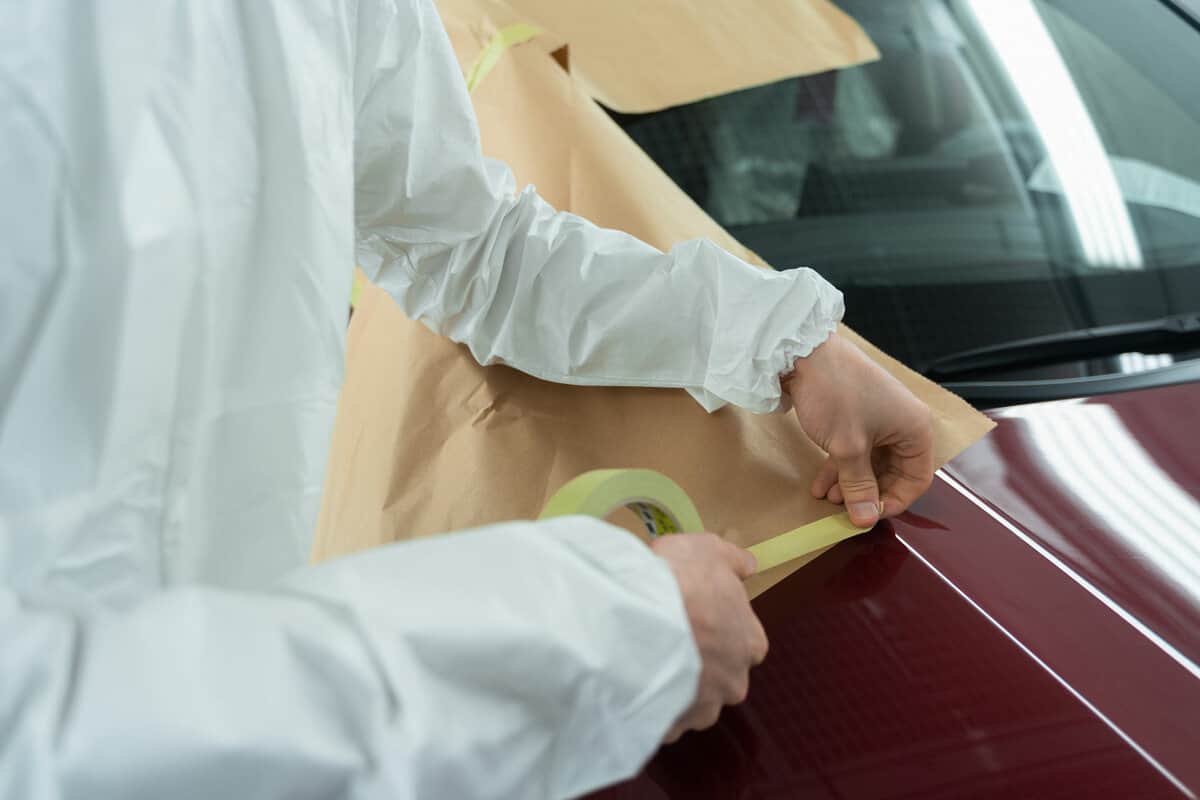
Can painter's tape withstand heat?
The surface of a car can get really absorb the sun's rays. The paint on a car hood or roof can get so hot that you won't be able to touch it long without burning your skin. The paint is formulated to withstand intense heat. You'll find the tape is just about as resistant.
Most brands of painter's tape are made to take a lot of heat. In fact, the typical brand of painter's tape can handle temperatures as high as 500 degrees Fahrenheit. This amount of resistance will surely give it enough strength to last in your driveway on a summer day.
Any tape you use on the surface of a vehicle will also need to be able to take the heat from the infrared bulbs that are used to dry the paint. So they make automotive painter's tape to absorb a lot of intensity, much more so than what the sun will do in the middle of the day.
Whatever you do, don't expose the painter's tape to an open flame
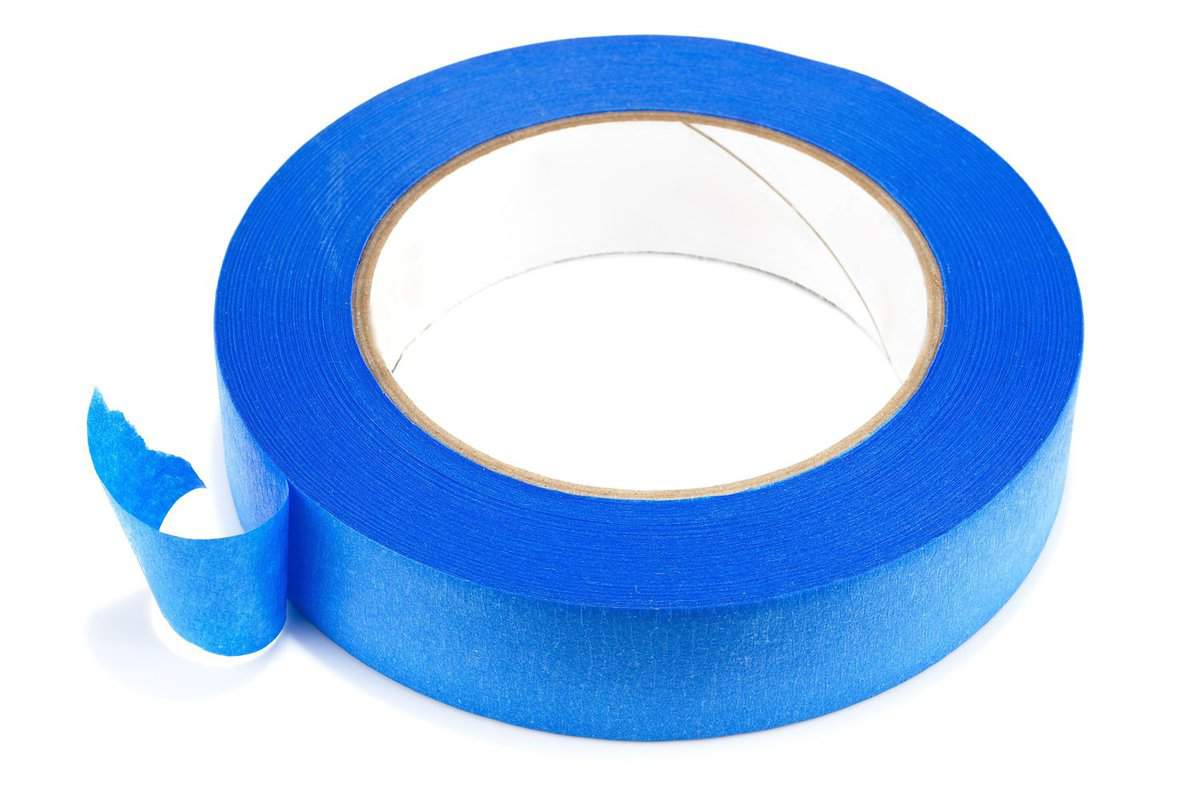
Know that even though painter's tape will last in extreme temperatures that it does not fare well near an open flame. Applying this type of direct heat to it will make it melt and burn. When this happens, toxic chemical fumes are released.
When should painter's tape be removed?
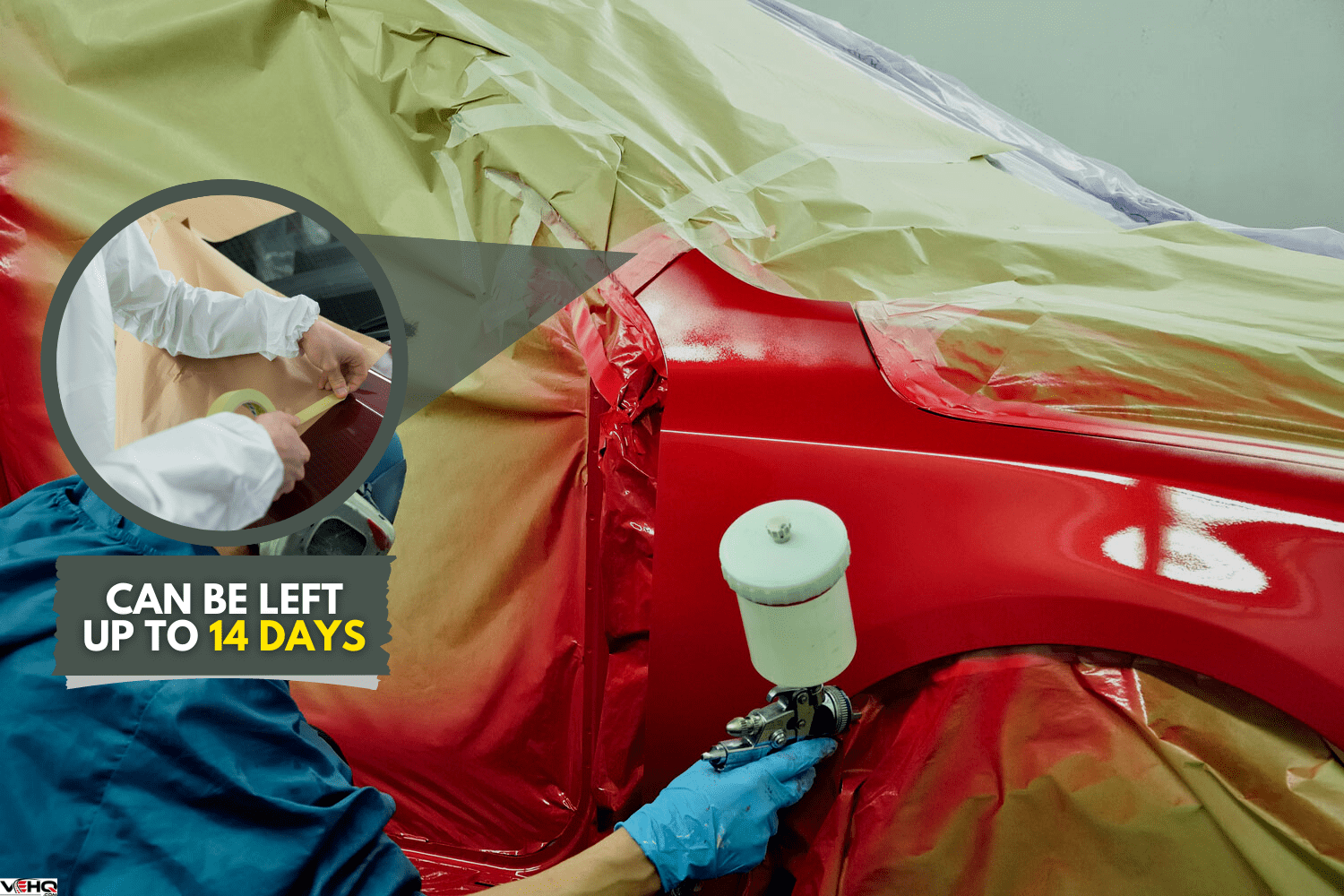
We mentioned earlier in this post that painter's tape can be left on your vehicle's surface for up to 14 days without any issues. But that doesn't mean that you need to keep it on for nearly this long. Knowing when it's okay to remove the tape will help speed your paint job along in a safe and orderly way.
Painter's tape can be removed as soon as the paint is thoroughly dried. The amount of time it takes for paint to dry and cure will vary from brand to brand. The type of paint is also a factor here.
Read the instructions carefully so that you'll get a general idea of how long it will take. To be on the safe side, it's okay to add additional time to that number.
When you're ready to remove the painter's tape, don't just rip it away haphazardly. Carefully peel the edge back and slowly roll it away from the surface so that it comes off cleanly.
Why is the painter's tape peeling off the paint?
Imagine being finished with a painted section of your vehicle and the time has come to remove the painter's tape. You begin to roll a strip away, only to have a bit of paint come off with the tape as it's rolled away. What could be more frustrating?
When this happens, it is usually due to one of two reasons. The main reason this would occur is from the paint not being fully dry. It's important to ensure that the paint you applied has been fully dried and cured before you make the move to remove any of the tape that is bordering it.
The second reason is a polluted surface area. If any bits of debris are under the tape and into the painted area, rolling the tape away would pull that debris up with it. When this happens, the debris would work away any paint that was attached to it.
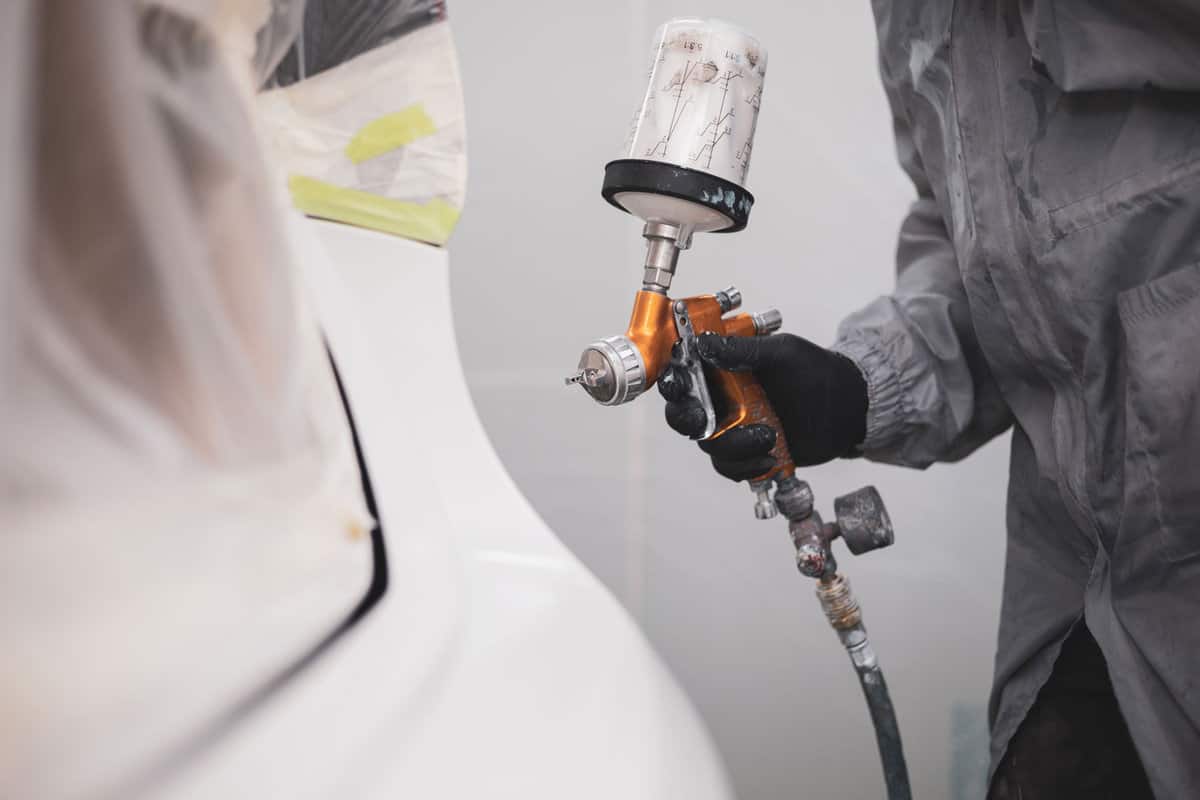
Can I use regular masking tape on my car?
Earlier in this post, we mentioned that painter's tape is a type of masking tape that's safe for use on a vehicle's paint job. Does this mean that any masking tape will work?
As we researched this question, we discovered that there is quite a difference in the durability between masking tape intended for automotive use and the kind you'd use around your home.
The most significant difference between automotive painter's tape and regular masking tape is how much heat each one can take. The surface of a car alone can get too hot for regular masking tape, let alone when it's exposed to the infrared rays that are sometimes used to safely dry and cure the paint.
Not being able to take this intense heat, this tape will shift and make the freshly applied coat of paint bleed.
Only use tape that has been engineered to withstand the intense amount of heat that goes with painting a vehicle. Be sure that the tape is suitable for the vehicle's surface as well, and never use any adhesive on your paint job that isn't expressly designed for this sort of paint.
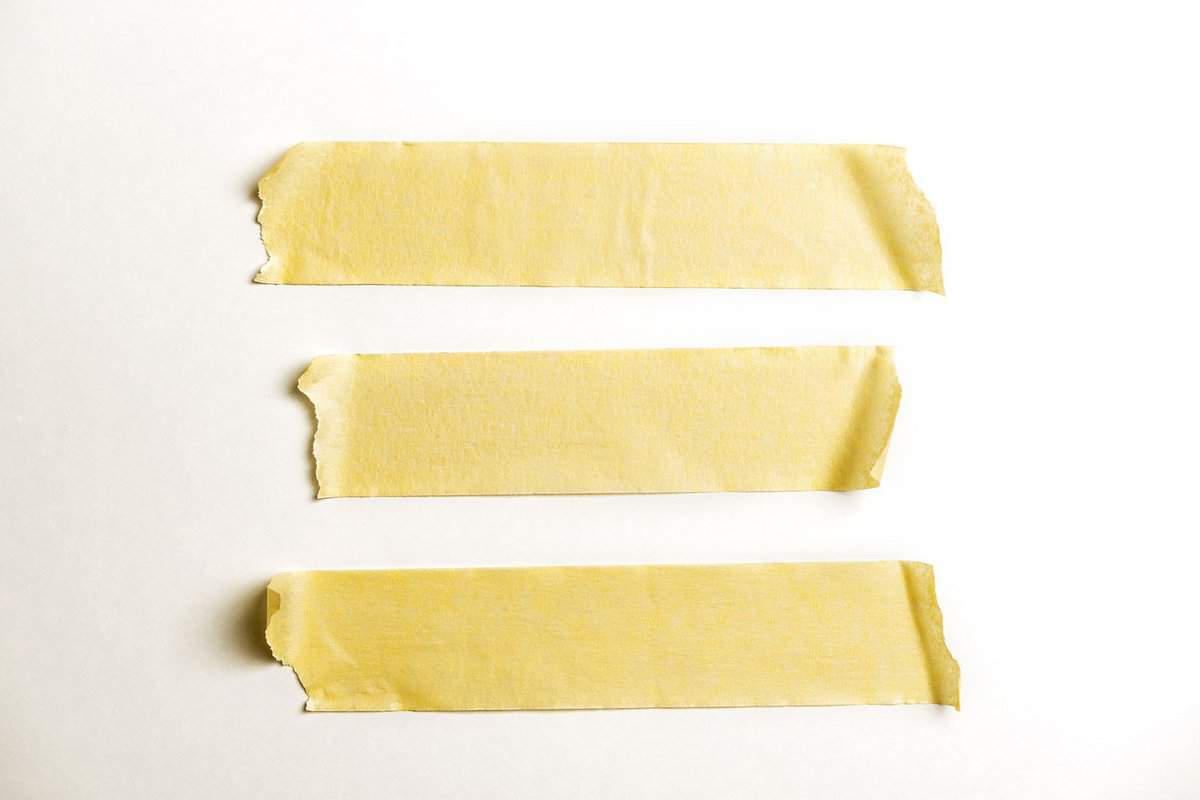
Final thoughts
Painter's tape can be used on a wide variety of surfaces, including on your vehicle. Carefully using this masking tape will protect against unwanted paint spatters, keeping a neat and clean set of lines consistent with the look you are trying to achieve. Be sure the paint is fully dried and cured before you remove it.
We're glad you made it this far! We hope this post on automotive paint answered your questions. For additional helpful information, we recommend reading the following posts:
How Many Gallons Of Paint Do I Need To Paint A Car Or Truck? [By Size Class]
Does 3M Tape Damage Car Paint?
How To Remove Chevy Emblem From Tailgate [Step By Step Guide]
